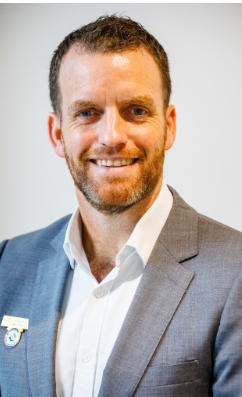The Australian Society of Medical Imaging and Radiation Therapy (ASMIRT) is the peak body representing medical radiation practitioners in Australia. Our aims are to promote, encourage, cultivate and maintain the highest principles of practice and proficiency of medical radiation science, always mindful that the welfare of the patient should be at the centre of everything we do. ASMIRT is delighted to become a member of the ESTRO community via the RTT Alliance and hope that we are able to contribute as much as we are able to learn and assist our own members in Australia.
In brief, the ASMIRT secretariat is located in Melbourne Australia, with a membership of around 9000 including students, radiographers, radiation therapists and nuclear medicine practitioners across Australia.
ASMIRT’s key focus is to empower medical radiation practitioners to provide excellent patient care through leadership in advocacy, education, professional standards and research and innovation. Through these four pillars, we engage with our membership through an active community of volunteers that are experts in their respective fields.
This article details numerous pieces of advocacy work that ASMIRT is engaged in on a national level. We encourage conversation on each of these issues and are open to collaboration and discussions with the ESTRO RTT community, to share like experiences and to forge common solutions for our profession.
Placement poverty
ASMIRT appreciates that the economy drives many decisions that are made daily in workplaces, and in turn, are passed on to our students who will become our future colleagues and leaders.
One of the most significant issues identified by students is the hardship experienced when having to travel great distances for their clinical placement experiences. In order to meet the growing cost of accommodation and living associated with student placements, students are resorting to extreme measures such as sleeping in cars or tents while undergoing placements. In a recent strategy to support student clinical placements across a number of essential services, the Australian Government neglected to consider radiation therapy, diagnostic imaging and nuclear medicine students in its newly proposed new paid placements scheme, placing greater barriers to the student experience. Students are required to undertake more than 52 weeks of clinical placements throughout their four-year undergraduate degree courses, with the financial burden of rural, regional and interstate clinical placements very significant. Of more concern are the students who discontinue their studies and are lost to the profession, as they do not have the capacity to relinquish their part-time, paid jobs to undertake these unpaid placements. ASMIRT has actively sort consultation with the Australian Government to address this inequity for radiation therapy students.
Workforce issues
Fewer enrolling and/or graduating radiation therapy students compound an already stretched workforce that is suffering burnout and contending with a critical and chronic workforce shortage exacerbated by the COVID-19 pandemic. ASMIRT recognises the significant workforce pressures and chronic shortages in workplaces across Australia and globally, with the industry not having an opportunity to recover fully from this world crisis.
To support this workforce shortage, ASMIRT is rapidly learning from colleagues in the UK, who have an “Earn while you learn” model. This model has been successfully implemented in the UK and was a model previously utilised in the Australian environment in the 1980’s prior to establishing the degree program we now operate within. The concept of an apprenticeship model of study in hospital departments, supports growth of a local workforce. This enables students to undertake study while having the support of income whilst the clinical aspects of placement are undertaken. ASMIRT are closely watching as plans for this model are adopted as part of a trial program in nuclear medicine.
Scope of practice Development and Documentation
Another significant area that ASMIRT and the Australian regulators are collaborating on is the Scope of Practice of Australian Medical Radiations Practitioners. This is a significant portfolio that requires careful thought and consideration. As a medical radiation practitioner, there are very clearly defined roles and responsibilities that are required as part of our capabilities and everyday work. However, as technology expands (e.g. MR integrated RT, AI, adaptive RT) and workload and responsibilities change to maintain services, practitioners are being afforded opportunities to enhance their skills and knowledge.
ASMIRT and the regulator’s position mandate that a clinical practice must be suitably capable of training the medical radiation practitioner in the new procedure/technology, the medical radiation practitioner must be in agreement to do so, and all stakeholders (radiologists, radiation oncologists, nursing staff etc) have written (and signed) departmental policies outlining the organisation’s specific processes, consent processes, and protocols. ASMIRT also strongly recommends understanding the legislation associated with each state in Australia, as there are different requirements which must be adhered to.
ASMIRT looks forward to building upon our partnership with the ESTRO RTT Alliance as we share like issues, opportunities and challenges as a critical profession in the global radiation oncology community.

Dr Nigel Anderson
Radiation Therapy Manager
Olivia Newton John Cancer Wellness & Research Centre, Austin Health, Melbourne, Australia
Board Member, Australian Society of Medical Imaging and Radiation Therapy

Ms Min Ku
Professional Standards Manager
Australian Society of Medical Imaging and Radiation Therapy, Melbourne, Australia